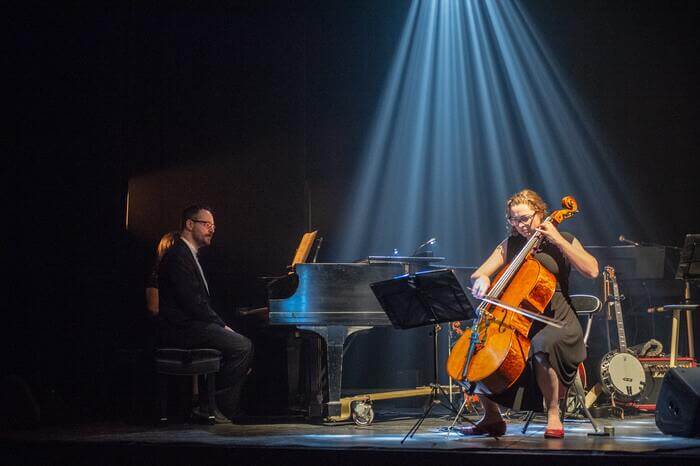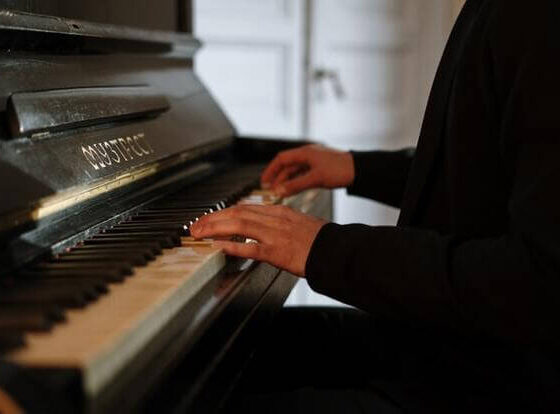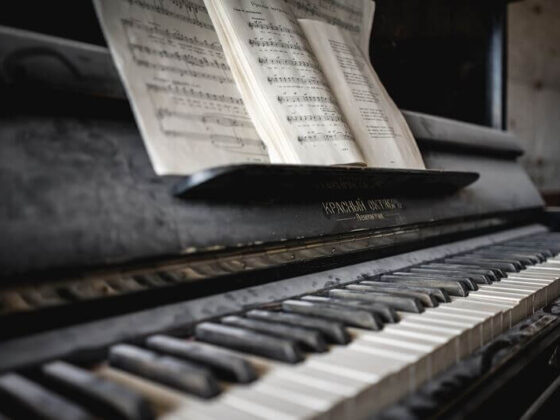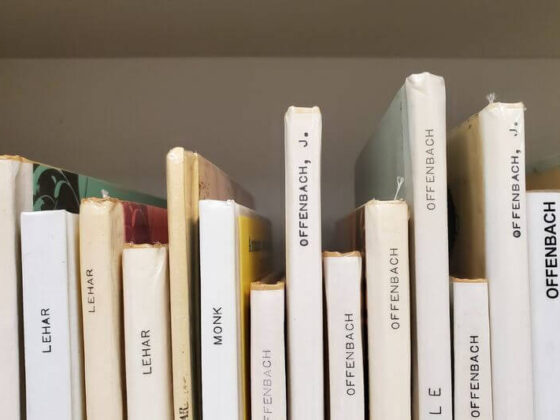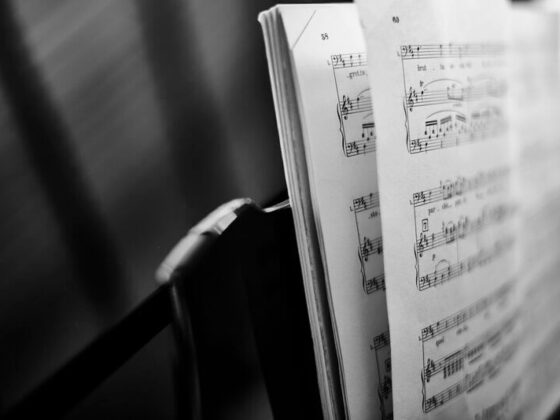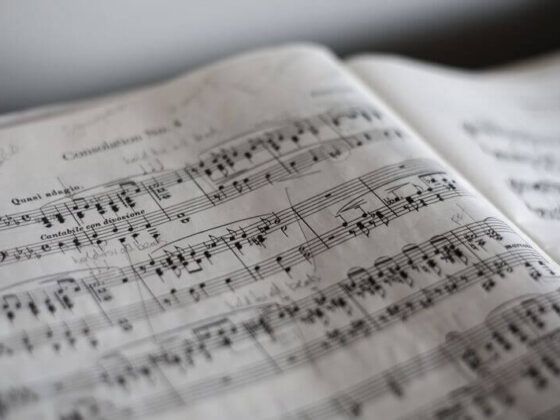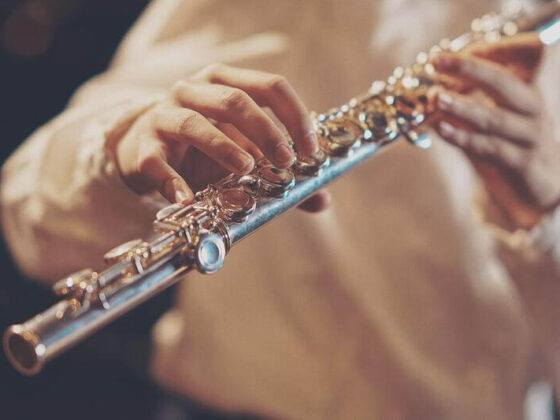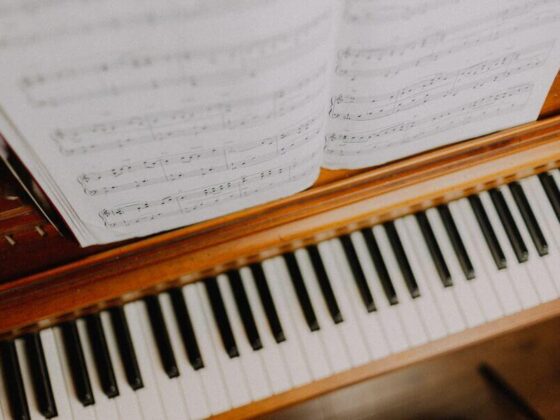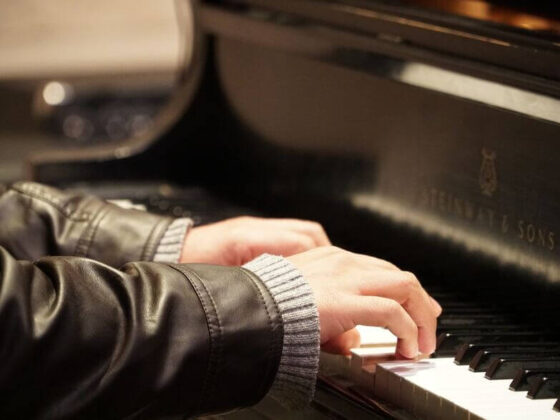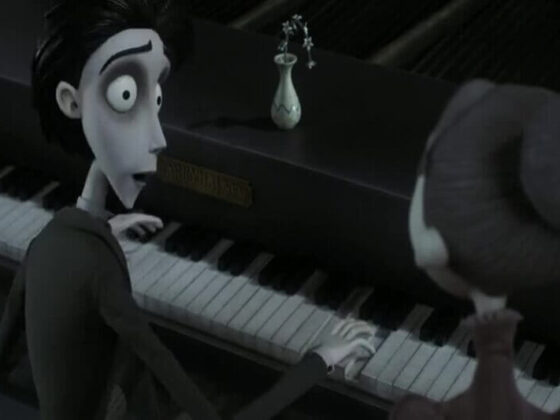This post is all about the best piano and cello duets.
Cello and piano are two instruments that perfectly complement each other. For this reason, they have received a lot of attention from composers of any period, from Baroque to contemporary.
However, in most cello and piano duets, the cello takes the leading role while the piano takes the accompaniment, which may not be so fun and satisfying for the pianist. That’s why, alongside traditional duets with piano accompaniment, we have also included pieces where the piano part is as rich and significant as the cello apart.
Best Piano & Cello Duet Songbooks – Quick Overview
[wptb id="5202" not found ]Without further ado, let’s now look at the best piano and cello duets for each level!
Easy Piano and Cello Duets
Song for Sienna – Brian Crain
Composed by Brian Crain, Song for Sienna is one of the most beautiful duet songs written for beginner pianists and cellists. It has a lovely melody and an accompaniment and is perfect for playing on any occasion.
Spiegel im Spiegel – Arvo Pärt
Spiegel Im Spiegel is a breathtaking duet written by the composer Arvo Pärt. While the piece was originally composed for piano and violin, it is often played as a piano-cello or piano-viola duet.
The piano part features a simple arpeggio, accompanied by a slow-moving and legato cello melody. The combination of piano and cello in this piece produces a heavenly beautiful and soothing sound.
Because the piece is minimal in style, it contains very few notes for both instruments and is quite repetitive, making it ideal for beginner players. Therefore, do not be intimidated by the fact that the piece is 10 minutes long, as the same notes are played over and over again at a very slow pace.
Intermediate Piano and Cello Duets
The Swan – Camille Saint-Saëns
The Swan by the French composer Saint-Saëns is one of the most well-known and beautiful duets for cello and piano. It is actually the 13th movement of the musical suite, The Carnival of the Animals. However, it is often performed as a separate piece due to its fame.
It was also originally scored for cello and two pianos, but it is most often performed as a solo piano and cello duet.
The piece is fairly simple to play for intermediate players. The piano constantly plays broken chords while the cello plays a slow and legato melody.
The real challenge in this piece comes not from the technique but from interpretation. While the notes and the tempo are easily manageable, playing this piece expressively with a decent legato is the hardest part.
Overall, I believe The Swan is a must-play duet for any piano and cello duo!
Élégie Op. 24 – Gabriel Fauré
Élégie by Gabriel Fauré is another well-known piano and cello duet in the classical repertoire. The piece is incredibly sorrowful yet beautiful at the same time.
The work starts with a melancholic melody which then builds into an intense and passionate section in the middle. The piece ends with the same sorrowful section in the beginning.
Although the central instrument in this piece is the cello, there are times when the piano becomes the focus and the cello accompanies it. Overall, however, the piano part is more difficult than the cello part, and it requires a late-intermediate or advanced pianist.
While it’s a very sad piece, learning and playing it is so much fun. It also features a wide variety of techniques for both instruments, so learning this piece is more than worth the effort.
Highly recommended!
Kaze no Torimichi (The Path of Wind) – Joe Hisaishi
Kaze no Torimichi (The Path of Wind) by Joe Hisaishi is one of the soundtracks from the animated movie, My Neighbor Totoro. As with most of Hisaishi’s music, this piano-cello duet conveys a lot of emotions and speaks directly to the heart.
The piano and cello play at a relatively relaxed tempo until the section where the music reaches its climax and both instruments start to play with more passion and confidence. Then, the music returns back to the main theme, this time with a slightly different variation.
This duet is one of those pieces that impress everyone with its sentimentality regardless of whether the audience likes classical music or not.
Bourrée, Op. 24 – William Squire
The lightheartedness, captivating melodies, and interaction between technical spectacle and romanticism characterize Bourrée, Op. 24. Its composer, William Henry Squire, was a renowned cellist in Britain between the late 19th and early 20th centuries.
This work is more of a traditional cello and piano duet where the piano takes on the accompaniment role and the cello leads the music. The cello part is full of different techniques, so practicing it will be very helpful for beginner and intermediate cellists.
O Canto do Cisne Negro (Song of the Black Swan) – Heitor Villa-Lobos
While I think all of the pieces on this list are gorgeous, this one by Heitor Villa-Lobos is definitely in my top three piano and cello duet songs. I don’t think words are enough to describe how beautiful and elegant this work is, so I urge you to listen to it.
Heitor Villa-Lobos was a leading figure in 20th-century Brazilian art music. He was best known to blend Brazilian folk music and stylistic features of European classical music.
This work does not reflect this mixture of styles as much as his later compositions. It belongs to a phase where Lobos was experiencing the full range of cello in a romantic and melodic approach within the European classical style.
The piano part is full of arpeggiated chords that never stop until the end of the piece, so it requires a more experienced pianist. The most important thing about the cello part is to make it sound expressive and melodic, so you should put in the extra effort beyond just playing the correct notes.
Lied ohne Worte (Song without Words), Op.109 – Felix Mendelssohn
Composed by Mendelssohn for cellist Lisa Cristiani, this piece is an exquisite duet that I can’t get enough of listening to. It is so profound in its simplicity, but at the same time very passionate and emotional.
This duet doesn’t have a lot of technical difficulties, so it’s perfect for intermediate players. Overall, the piano plays the accompaniment and the cello handles the melody. But, because of changing accompaniment patterns, the piano part is still exciting enough.
Sonata in G Major for Cello and Piano – Berteau/Sammartini
This sonata was originally attributed to Sammartini, though it is now attributed to Martin Berteau, the French composer, and cellist of the classical period. It’s such an elegant duet that I think you will enjoy it as much as I do if you haven’t heard it before.
The piece is quite manageable for intermediate players. It’s mostly a repetitive piece, though you should keep an eye on the changing textures and dynamics.
7 Variations from Mozart’s Magic Flute – Beethoven
7 Variations From Mozart’s Magic Flute is one of Beethoven’s lesser-known works. It consists of seven variations of Bei Männern, a lovely duet song from the first act of Mozart’s opera, The Magic Flute. In Beethoven’s variations, the piano takes the role of Pamina and the cello takes that of Papageno.
Due to the nature of the duet song, the dialogue between the instruments is conducted on equal terms, giving the piano an equal status as the cello. The piano and the cello are in a never-ending joyful dialogue, which requires good communication and listening between the duet partners.
Rondo in G Minor, Op. 94 – Antonín Dvorák
Originally composed for solo cello and the piano, this work was later rearranged for orchestra and the piano by Dvorak. This is one of those works that should belong in any cellist’s standard repertoire.
This piece is written at a relatively high register for the cello, utilizing the instrument’s capacity to play lyrical song-like melodies. It emphasizes the player’s virtuosity, but it is still just at the right level for late intermediate and advanced players.
Overall, it’s an entertaining and effective piece that is great to learn as both an exercise and a performance piece.
Cello Sonata No.1 in E minor, Op. 38 – Johannes Brahms
One of Brahms’s darker pieces, this piano and cello duet is more at a late intermediate or advanced level. It’s much longer compared to other intermediate pieces on the list, so it might be harder to memorize without good practice.
Overall, the cello section is easier compared to the piano section. The pianist should be advanced enough to carry the piece. The piece also requires good listening and communication between the partners.
In the instructions Brahms gave for the piece, he said that the piano “should be a partner – often a leading, often a watchful and considerate partner – but it should under no circumstances assume a purely accompanying role”.
Advanced Piano and Cello Duets
Arpeggione Sonata – Franz Schubert
This piece was originally written for arpeggione, an instrument which is sometimes called guitar violoncello, though it only enjoyed brief popularity in the 1820s. Today, this piece is mostly played as a cello and piano duet.
It takes around 20 minutes to play the whole piece. Its compositional quality is beyond words, and it’s one of those pieces that any advanced cello and piano duo should have in their repertoire.
Sonata for Cello and Piano in D minor, Op. 40 – Shostakovich
One of Shostakovich’s early compositions, this sonata was written during the period of Shostakovich’s separation from his wife in 1934.
The piece is incredibly intense with a wide range of dynamics, tempo changes, and techniques. It reflects a variety of feelings. While it’s a quite challenging duet, it’s also one of the most satisfying and fun pieces to play as a duet once you master it.
Sonata in G minor for Cello and Piano, Op. 19 – Sergei Rachmaninoff
Rachmaninoff, along with Chopin, has written piano and cello duets that are equally demanding on both parts. Because they are both among the most virtuoso pianists of their generations, the piano parts in their duets are never just an accompaniment. They treat the piano the same as they treat the cello, so both instruments require the same amount of virtuosity to pull off.
This sonata is no exception. Rachmaninoff composed this duet in a way that the majority of the themes throughout the piece are introduced by the piano. These themes are further elaborated by the cello part.
Overall, this Rachmaninoff sonata is perfect for duet partners who are up for a challenge!
Adagio and Allegro, Op. 70 – Robert Schumann
While this work was written for horn and piano, Schumann also wrote transcriptions for cello, violin, and viola. After listening to it, Clara Schumann said that the piece was “just the sort of piece that I like, brilliant, fresh and passionate.”
We can’t help but agree with Clara Schumann. The work features both slow and fast movements, which all sound incredibly beautiful and light.
Overall, this duet is so much fun to play, so definitely give it a chance if you’re looking for an advanced-level piano and cello duet.
Cello Sonata No.1 in F major, Op. 5, No. 1 – Beethoven
One of the finest examples of piano and cello duets, Cello Sonata No.1 by Beethoven is among the first fully developed cello sonatas.
Prior to the first cello sonatas of Beethoven, the sonatas for the piano and other instruments were usually written in a way that the other instrument would only accompany the piano section. This sonata, however, is one of the first examples where the cello isn’t used solely as an accompaniment instrument, both instruments leading the work alternately.
The abundance of melodies in the work gives it a playful character, which makes it an incredibly fun duet to play.
Le Grand Tango – Piazzolla
Composed by the Argentine composer Astor Piazzolla, Le Grand Tango is an astonishing piano and cello duet that you should definitely look into if you’re in search of a lively and passionate piece.
One of the reasons this duet sounds so exciting and different is that it features traditional tango and jazz-influenced syncopated rhythms. While this piece is not easy for both instruments, it’s especially complicated for the cellist due to challenging double stops and glissandos.
Despite being a single movement piece, it has three sections, all in different moods, rhythms, and dynamics. Another challenge for this piece is that it requires perfect communication between the piano and cello as both parts are in constant dialogue.
Despite all of its challenges, it’s an incredibly beautiful piece to play, so I think it’s definitely worth the effort!
Cello Sonata in G minor, Op. 65 – Frédéric Chopin
This sonata has a special place in Chopin’s life, as it was his last work published when he was alive. It is also one of the only nine works Chopin wrote that weren’t only for solo piano.
As it would be expected from Chopin, both instruments in this sonata are written competently so that the piano doesn’t only accompany the cello but have its own virtuosic lines. Structurally, the work is shaped around certain theme patterns heard in all movements.
Overall, it’s an impressive and intense duet full of emotions and movement, making it a perfect piece to perform for any type of performance!
Elegy for piano and cello op. 96 – Nikolai Kapustin
Nikolai Kapustin was a composer known to blend the genres of jazz and classical, and this duet beautifully reflects his unique musical style.
Related: Top 16 Famous Russian Pianists
The Elegy’s tempo marking is “grave”, yet the music sounds solemn and contemplative rather than sad and gloomy. The piece starts with a brief piano introduction followed by the cello introducing the gorgeous main theme. It then develops into a jazz section in the middle, returning back to the beginning theme and mood at the end.
While the relaxed tempo makes you feel like it’s not a challenging piece, the complex interplay between different musical styles throughout the piece makes it somewhat challenging. Still, it’s an incredibly interesting and exciting duet to play if you’re looking for something other than traditional styles.
Cello Sonata in C major, Op. 119 – Sergei Prokofiev
A work full of charm, musical expression, and wit, Prokofiev’s cello sonata is one of the most beautiful sonatas written for the instrument.
While it’s a challenging duet, it’s not as hard as some of the other duets on this list, so intermediate players can also give it a try.
The rapid-fire arpeggios at the end of the first movement are the most difficult to play, although they aren’t as difficult as they appear. The stopped harmonics at the end of the second movement also require good practice.
Romance for Cello and Piano – Frederick Delius
This charming romance for cello and piano by Delius was one of the exam pieces of ABRSM Grade 8 Cello. This duet is not only great to learn as an exercise piece, but it’s also a wonderful one for performances. It’s incredibly rich in emotion, depth of expression, and harmony.
It’s a single movement piece with three sections, each section featuring long-breathed melodies, which is one of the biggest challenges of the work. While the long-breathed melodies may sound easy to the listener, they are actually quite challenging to play for the cellist as there’s hardly any bar rest.

